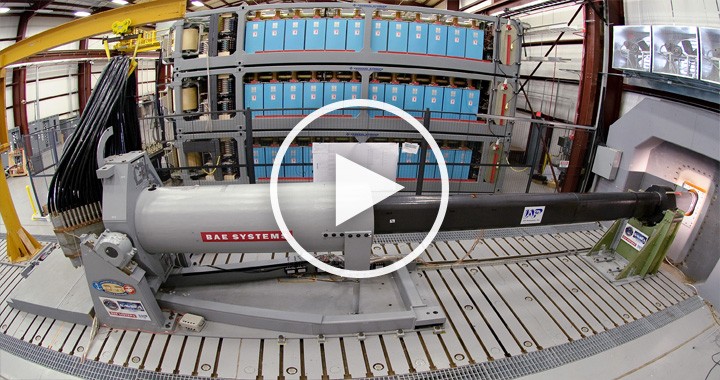Theory of electromagnetic Railgun
Why electromagnetic Rail-gun is future of military Technology?
Following are the Reason why Railgun is future of military Technology
- Using Explosive to power artillery has some drawbacks . perhaps the most glaring one ,being that naval ships have to carry huge caches of explosive on board to power their guns . This has backfired several times through-out history particularly during world-war 2 when on multiple occasions Japanese attacks detonated huge stores of ammunition’s with in ships ,particularly the most horrifying case being the kamikaze attack on USS john burke where the resulted explosion dwarfed the gigantic ship in its convoy . So by using rail gun these horrifying incidents would be avoided in future
- Current Rail-gun designs are doubling the muzzle velocity of all naval artillery with hyper sonic speed up-to mach 6 . most naval artillery max out at mach 3 .This would extend the range and reduce the time of impact by nearly double too
How rail gun works ?
Rail guns are the Guns that uses electromagnetic force to propel a projectile instead of an explosive . It uses electromagnetism to propel a conductive armature ,housing the projectile ,downrange.
A rail gun consists of two parallel metal rails connected to an electrical power supply.These two rods can be considered as weapon barrel When a conductive projectile is inserted between the rails , it completes the circuit. Electrons flow from the negative terminal of the power supply up the negative rail, across the projectile, and down the positive rail, back to the power supply.
This current makes the railgun behave as an electromagnet, creating a magnetic field inside the loop formed by the length of the rails up to the position of the armature.
In accordance with the right-hand rule, the magnetic field circulates around each conductor. Since the current is in the opposite direction along each rail, the net magnetic field between the rails (B) is directed at right angles to the plane formed by the central axes of the rails and the armature. In combination with the current (I) in the armature, this produces a Lorentz force which accelerates the projectile along the rails, always out of the loop and away from the power supply.
There are also Lorentz forces acting on the rails and attempting to push them apart, but since the rails are mounted firmly, they cannot move.
By definition, if a current of one ampere flows in a pair of ideal infinitely long parallel conductors that are separated by a distance of one meter, then the magnitude of the force on each meter of those conductors will be exactly 0.2 micro-newtons.
Furthermore, in general, the force will be proportional to the square of the magnitude of the current and inversely proportional to the distance between the conductors.
It also follows that, for railguns with projectile masses of a few kg and barrel lengths of a few m, very large currents will be required to accelerate projectiles to velocities of the order of 1000 m/s.
A very large power supply, providing on the order of one million amperes of current, will create a tremendous force on the projectile, accelerating it to a speed of many kilometres per second (km/s). Although these speeds are possible, the heat generated from the propulsion of the object is enough to erode the rails rapidly.
Under high-use conditions, current railguns would require frequent replacement of the rails, or to use a heat-resistant material that would be conductive enough to produce the same effect.
At this time it is generally acknowledged that it will take major breakthroughs in materials science and related disciplines to produce high-powered railguns capable of firing more than a few shots from a single set of rails. The barrel must withstand these conditions for up to several rounds per minute for thousands of shots without failure or significant degradation. These parameters are well beyond the state of the art in materials science

